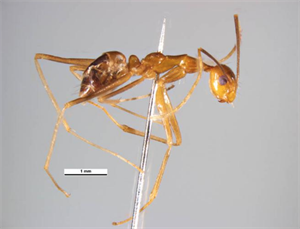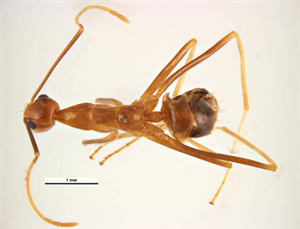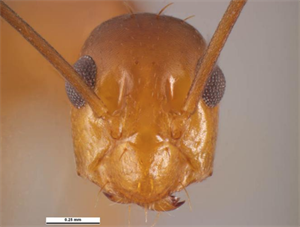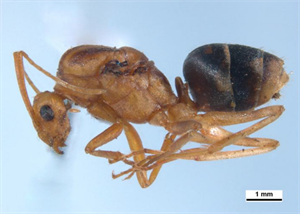- Worldwide distribution. Common in Pacific island countries. Favours disturbed agriculture, forest areas, houses. Characteristic long antennae and quick jerky movements. Does not sting; sprays formic acid. Among world's 100 worse invasive species.
- Nests on ground or in trees; forms super-colonies (10-150ha), up to 20 million workers/ha. A scavenger. Eats seeds, other insects, molluscs, smaller vertebrates, and honeydew. Forages day and night.
- Direct damage: vegetable seeds; loss of biodiversity; indirectly by defending aphids, mealybugs, scales and whiteflies from natural enemies.
- Tramp ant. Spread by 'budding' - queens and workers leave the colony; spread via international trade.
- Biosecurity: requires risk assessments, regulations preventing introduction, protocols in case of breaches, and ability to make rapid response. Pacific Ant Prevention Plan available (IUCN/SSC Invasive Specialist Group).
- Cultural control: hot water at 47°C kills ants; over 49°C kills plants.
- Chemical control: use (i) stomach poisons (fipronil, Amdro®, borax), (ii) growth regulators (methoprene, pyriproxyfen), (iii) nerve poisons (bifenthrin, fipronil, imidacloprid). See (http://piat.org.nz/getting-rid-of-ants).







